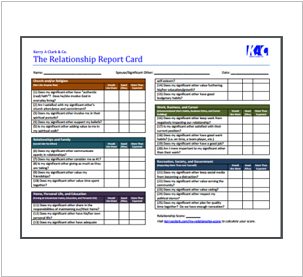Determine Your Endpoint
Goal Setting for Everyday Use – Part 4
What is the difference between a goal, mission, project, assignment, and a task? Have you ever considered the difference between these five words? To be honest, there is not much difference between them. However, they all have one thing in common and that is to get something done. Let’s make it simple, we all have things we desire to get done regardless of which one of these terms we apply to it. The question that we should then ask after getting over these words is this. What would I like to get done?
 As I mentioned in “Goals for Your Life,” I hated going to the mailbox because the bills were out of control. On top of the normal expected items, we would unexpectedly receive bills like auto tag renewals and homeowners’ association fees to make an unpleasant situation financially worse. They had a way of hitting the mailbox at just the most inappropriate times. Opening the mailbox became just insulting. Therefore, like most, the mailbox would produce unnecessary anxiety and even stress for us. Stay with me, I am going somewhere with this.
As I mentioned in “Goals for Your Life,” I hated going to the mailbox because the bills were out of control. On top of the normal expected items, we would unexpectedly receive bills like auto tag renewals and homeowners’ association fees to make an unpleasant situation financially worse. They had a way of hitting the mailbox at just the most inappropriate times. Opening the mailbox became just insulting. Therefore, like most, the mailbox would produce unnecessary anxiety and even stress for us. Stay with me, I am going somewhere with this.
That mailbox experience revealed how we desired a different experience than what we were currently having. It uncovered and birthed a desire, a goal have you, that could have been easily ignored. So that you do not have a similar experience and to change how you think, let me share with you the goal-setting steps that were uncovered because of experiences like this.
Determine the Endpoint of Your Desire
Determining what the endpoint or destination is for one’s desire is the key to you achieving the very things you desire. Here are the three steps we unearthed.
- Ask questions of yourself.
Get used to talking to yourself. At times, you will have no one else you can talk to. In the case with the mailbox, we had to ask questions. For example, why do we feel this way? Does everyone feel anxiety and worry when he or she receives their mail? Is this normal behavior and if so, how do we get beyond normal? Ask yourself questions regarding the uncomforting experiences you have. - Think through your current state.
After asking the questions, think about your present state. Think about what triggers the problems. Think about the root cause and how you continue to contribute to it. To do this effectively, one must stop blaming others. Stop blaming your company. Stop blaming your parents. Stop blaming the economy. Stop blaming your small paycheck. Think about the current reality that you have and own it. It is your reality and no one other than you really care. Therefore, it is all on you. - Apply this thinking to defining a desired future state.
If we are going to get from one place to another place, it is no different than how one uses his or her GPS. It knows your current destination (current state) and then you must define your desired destination. This is where most people fail when it comes to goal-setting. You must be able to define what the desired state looks like.
Let’s go back to the example of the mailbox. Here’s what we envision when we go to the mailbox on a daily basis. We wanted to go to the mailbox and be excited about what was in it. We did not want to have any anxiety or stress. This was our desired destination. Your goals are your desired destinations. In the future, we no longer want to feel anxious or have anything come to us in the mail that we were not prepared for or that would upset our finances in such a way. That was our destination. In order to have a doable goal, you must be able to tell someone what it would look like to achieve it.
Goal setting and “walking-by-faith” are the same.
You know this as well as I do. Faith is the invisible hopes that a person has that become a visible reality. Faith is our ability to turn something we desire into something that can be experienced. That is why the uncommon person lives by faith not by what they see. [1] We could see the bills that would upset our day when we opened the mailbox. Therefore, we had to learn how to close our eyes to what was natural and see something different. That is faith. You, having a desire that you can define (setting-goals) is part-A or the prerequisite to having faith. It is the hoping piece. Next week we will get to the visible reality piece, but before we go there, start identifying your desired endpoints.
Question: Can you define your hopes?
[1] 2 Corinthians 5:7 NIV, Bible.com, accessed January 3, 2024, https://www.bible.com/bible/111/2CO.5.7.NIV
All Scripture references used by permission, see our Scripture copyrights.
 is available now!
Our team has worked very hard putting it together. We designed it to help you and your family move the needle forward in making your life your business.
Find out more about the Family plan here.
is available now!
Our team has worked very hard putting it together. We designed it to help you and your family move the needle forward in making your life your business.
Find out more about the Family plan here.


Leave a Reply